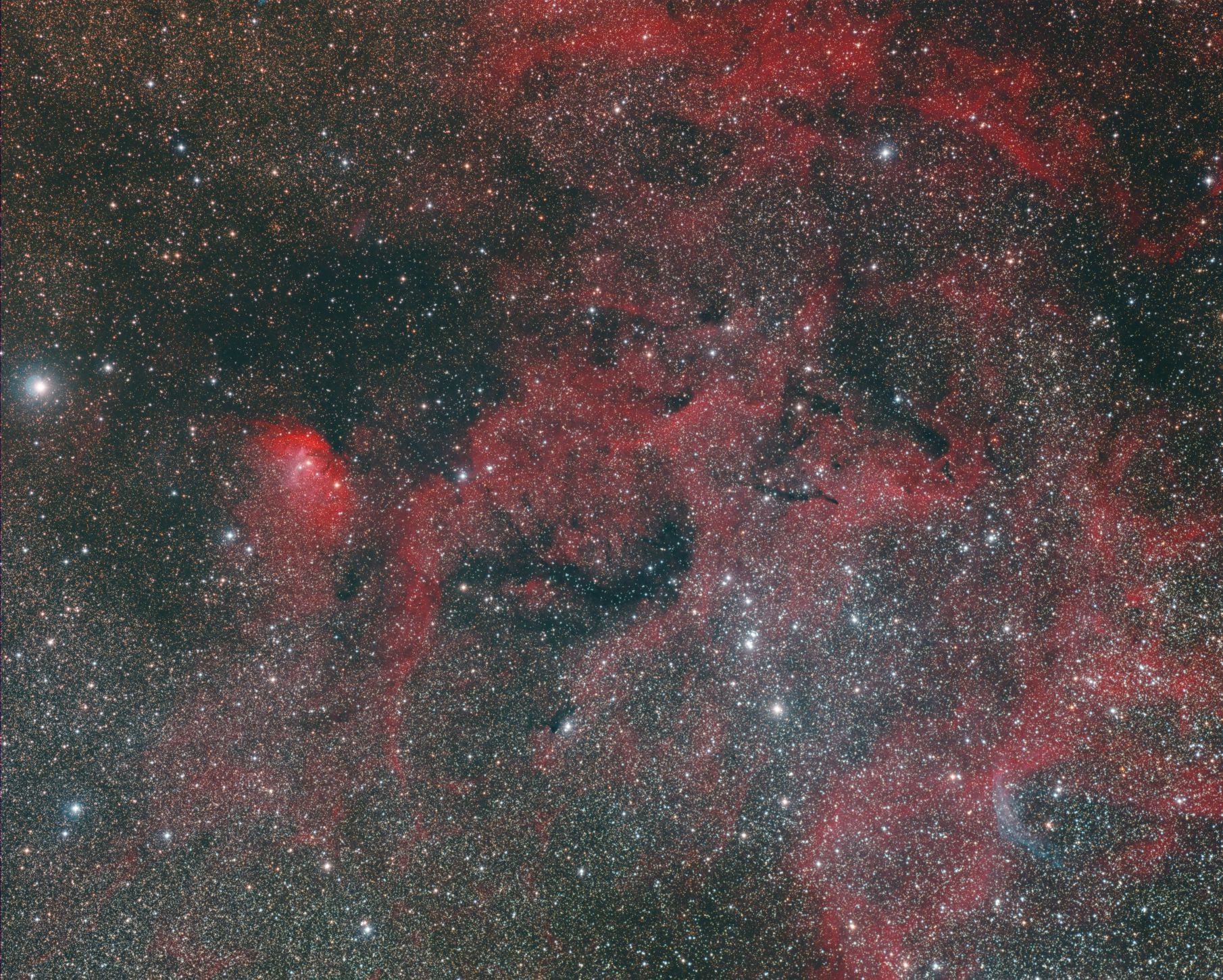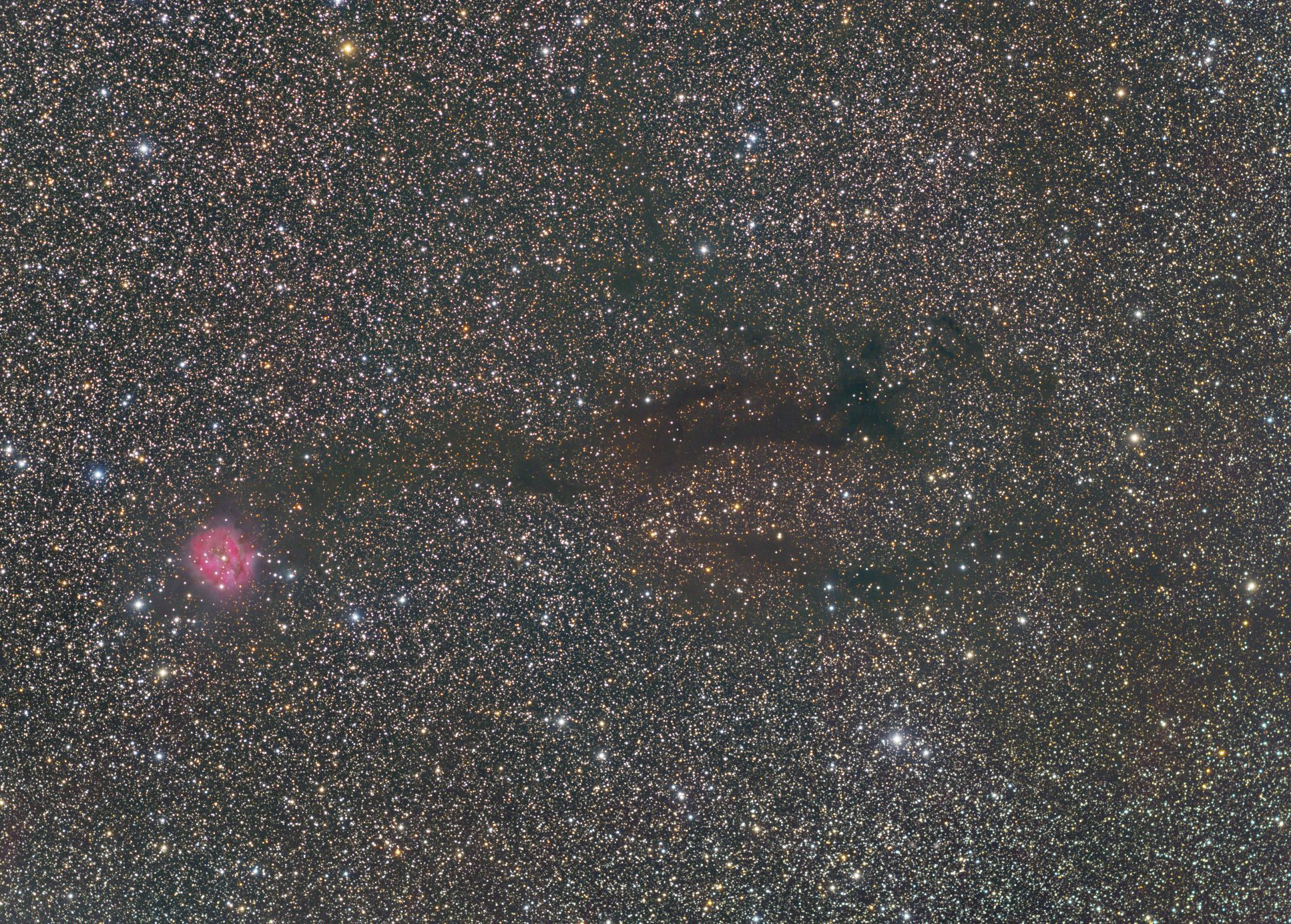With the end of summer twilight and the return of dark nights this is my first target of the season. The Tulip Nebula is often imaged in narrowband and with a wide field the surrounding area is full of Ha. There are also some OIII filaments.
This image is comprised of RGB frames (1/1/2 hours) combined with 2 hours of Ha and 9 hours of OIII. All subframes are 20 minutes.
Combination is using the Pixinsight EmissionLineIntegration script.







